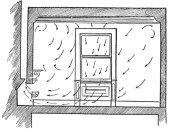TYPE OF PARTICLES (JENIS ZARAH) dan PHYSICAL STATE (KEADAAN FIZIKAL)
Dua ISTILAH yang jauh berbeza, tetapi masih terkeliru.
[Troubleshooting]
a) Ya : Jawab soalan seterusnya.
b) Tidak : Jawab soalan ini :
States of Matter : Keadaan Jirim
State of Matter : Keadaan Jirim
Type of Particles : Jenis Zarah
ATOM, MOLECULE AND IONS : Quiz
2. Adakah SEBATIAN (COMPOUND) adalah sejenis ZARAH?
a) Ya : Jawab soalan seterusnya.
b) Tidak : Tahniah. Tahap kefahaman anda masih OK!
3. Adakah ION, MOLECULE dan ATOM adalah sejenis ZARAH?
a) Ya.
b) Tidak : Betul. Betul-lah anda "SANGAT BERMASALAH". Jawab seterusnya.
4. Semua zarah LOGAM (Metal) adalah ATOM.
a) Ya.
b) Tidak : Hah. Makin teruk nih. Jawab lagi.
5. Gas Adi (Noble Gases) wujud sebagai MONOATOM.
a) Ya. Mono-Atom bermaksud terdiri dari satu atom sahaja tidak bergabung dengan atom lain.
b) Tidak. Tak paham MONO ke? Tak paham ATOM ni? Jawab lagi.
6. Zarah Air (Water) adalah molekul.
a) Ya.
b) Tidak. Eh..banyak yang tak kena ni.
7. Semua ZARAH gas adalah molekul.
a) Tidak. Bagus anda belum hilang ingatan. Ingat Gas Adi (Noble Gas) wujud sebagai ATOM.
b) Ya. SAH....anda 'hilang ingatan'.
8. Logam akan menjadi ION bercas positif untuk membentuk sebatian. (Metal will be positively charged ions to form compound.)
a) Ya. Anda faham konsep pembentukan ion.
b) Tidak. Erk...kritikal ni.
9. Pada suhu bilik, keadaan fizikal (physical state) oksigen berbentuk gas.
a) Ya.
b) Tidak. Sangat kritikal. How do you breathing?
10. Logam berbentuk pepejal (solid) pada suhu bilik.
a) Ya.
b) Tidak. Confirm anda sangat KELIRU.










